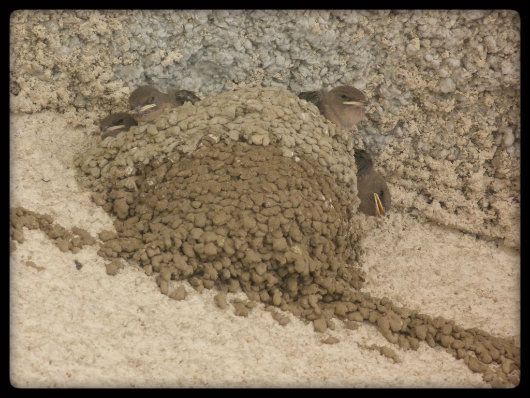My main targets were Hungarian glider, large chequered skipper and summer nettle tree butterflies. I first stopped at my March nettle tree sites and immediately discovered why it's so much easier to photograph the butterfly in the spring - reaching the nettle trees (the actual trees) was like breaking a trail through the rain forest. It was completely overgrown with bramble, Robinia and Buddleia, to the extent that even though I saw one nettle tree butterfly on the way through the undergrowth there was no possibility of getting a picture of it. I did eventually reach the tree where I had photographed a very amenable female laying lots of eggs in the spring. The leaves were thoroughly eaten, all over the tree, whether by celtis or something else:

I didn't find any chrysalids but I would expect the brief June generation to be on the wing anyway by now. This generation is born, makes babies and dies in a very short time, leading to a second summer generation that hibernates.
Purple-shot coppers were almost abundant at those sites - and common elsewhere. If I looked carefully I could always locate a male defending a territory:


(two shots of the same male)
Females are much harder to photograph because they don't have territories, so if one flies it has no incentive to come back to the same place - and in fact invariably doesn't.
Also present at those sites were small coppers and sooty coppers and I saw a scarce copper at my next site. Here is a sneak at the upperside of one of the male sooty coppers - quite different from the unmarked, black butterflies I photographed last week at altitude in Switzerland:

Chequered blues were also very common. This is a most photogenic butterfly!

I saw a single large chequered skipper in the morning, pogoing around the site. There was no chance of chasing it for a photo without crushing all the nectar plants that were sustaining so many butterflies, so I let it do its stuff and soon lost it. I thought there would be other opportunities later, but there were none. I think it is still early for this species this year. I'll go back.
Summer brimstones were on the wing and common:

Also flying were knapweed fritillaries, heath fritillaries, silver-washed fritillaries and a couple of freshly emerged large tortoiseshells. It was hot and everything was zooming around at very high speed - and even settled butterflies never lasted long before another one came and put them up. This pearly heath, rarely for the species, did sit down long enough for a quick photo:

After spending a little while at these two sites I continued cycling to where I hoped to see Hungarian gliders. This is towards the westernmost extreme of their range and they are very local but I knew where to go and had high hopes. In the event, I discovered that the thick banks of Spiraea where I had most easily watched them last time had been dug up to allow an underground water pipe through. There was still plenty of the plant in the area as a whole, but the best vantage point had been removed. In over two hours at this site I saw a single, male Hungarian glider, of which here are a couple of very poor photos:


This was a shame, as I had hoped to spend time getting to know the butterfly and perhaps watching females lay and males and females interacting. It was not to be. Perhaps the season is just late this year - I will come back - but I fear it will be harder watching them without a focal patch of dense foodplant.
This is what the foodplant looks like:


Males and females are very strongly attracted to it.
I also saw a couple of nettle tree butterflies at that site but they weren't posing. Spring laying is certainly a better time to observe this species. The June butterflies lay too but none of the three I saw today showed any signs of this sort of behaviour - perhaps they were males.
Other species flying were common blue, holly blue, clouded yellow, both swallowtails, red admiral, small tortoiseshell, great sooty satyr, meadow browns, ringlets, various whites (including a few large whites and lots of black-veined whites), large skippers and small skippers. I lost my net handle, sticking out of my backpack, as I broke through undergrowth at the first sites, which meant I couldn't be as comprehensive as I would have liked at the final site. With a net, I identify everything I see but without one I let a lot go so as not to end up trampling all the vegetation. There were several individuals of Melitaea and Polyommatus that I didn't formally identify, though I suspect all the blues I let pass were common blue.
On my way back down the hill I stopped to look for my net handle - which I quickly found - and saw what was either a southern white admiral or another Hungarian glider. There was no Spiraea at this site and my impression was southern white admiral.
Guy













































